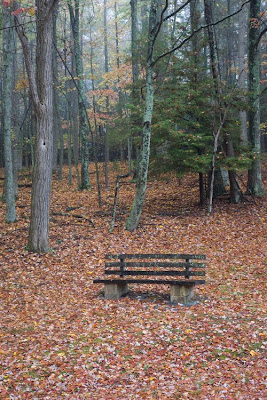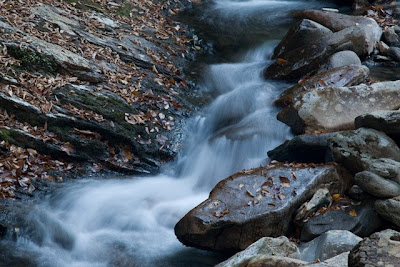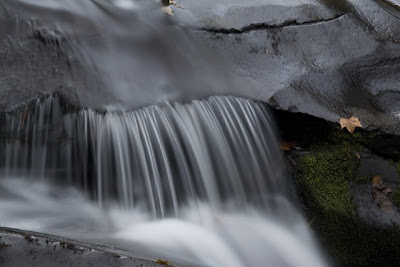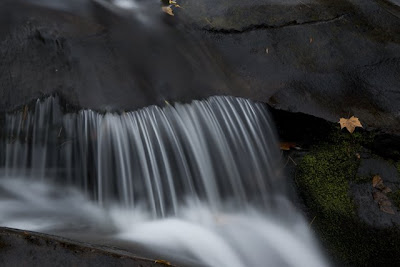I have not done any color adjustments on these - they are straight out of camera. This first shot does not look too bad, you can see the fall colors carpeting the ground.

But notice how much richer and more saturated the colors are with the polarizer. The polarizer removes the reflections from the damp leaves, leaving the colors deeper and richer.

On this next pair, I did do an exposure adjustment, but notice how the glare on the rocks goes away with the polarized image. This first one - not polarized:

Notice how much more the leaves show up on this one, where the glare from the wet rock is gone.

On this next pair of images, the glare on the wet rocks gives it a different look - I almost like the reflection on the wet rocks.

However, I really like how the leaf shows up better with richer color on the polarized version.

When shooting for blue sky and clouds, a circular polarizer works better when you are shooting at a a 90 degree angle from the sun. So if the sun is in the west, the polarizer will be most effective if you are shooting to the north or south. One way to see this for your self is to face north and turn the polarizer so the sky is that deep rich blue. Now turn all the way around watching the sky and how it changes. At some positions, the sky will be darker on the left or right. This is why if you are shooting panoramic shots, it is better to take the polarizer off. And if you are shooting directly away from the sun, you may also want to leave the polarizer off to keep the sky's color even rather than darker on one side. You can always deepen the blue using Selective Color in Photoshop. But most times, it is better to use the polarizer to get the color and the beauty of the clouds.
A polarizing filter also can amplify a rainbow. When you play with your polarizer with a rainbow, you'll see that at one setting, the rainbow disappears and then reappears as you twist the lens. The same is true with certain water reflections.


2 comments:
It is really a nice blog
Thanks, Mohamed!
Post a Comment